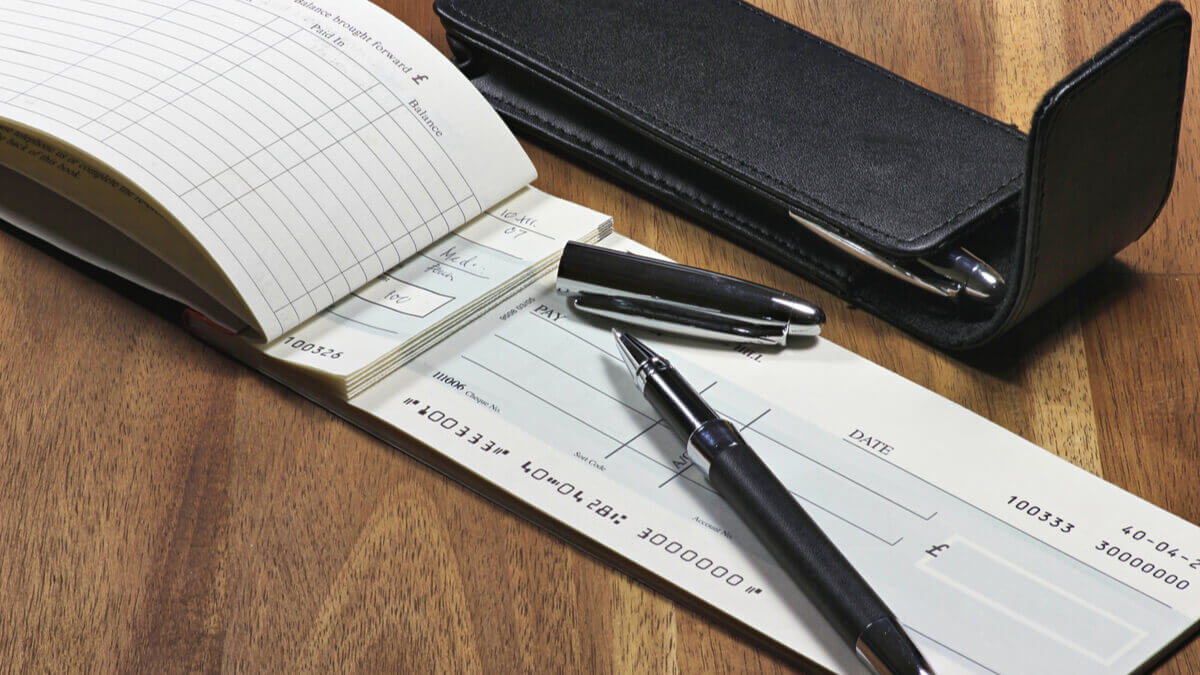Taxes on selling inherited property: Guide for US citizens
Learn how taxes on selling inherited property work as an American – from step-up basis to capital gains, timelines, deductions, and filing tips.

ABA stands for American Bankers’ Association, a trade association founded in 1875 to represent the interests of various players in the US Banking industry¹.
So how does the ABA number come into all this? Stick with us as we explain what an ABA number is, what makes it similar or different from a routing number, where you can find it and how it works.
But first, a word.
Are you looking for low-fee⁵ transfers overseas? Take a look at Wise - more on this, later. Send money internationally like a local
An ABA – also called as a routing number – is used to identify banks in the United States.
This nine-number code helps banks in the process of transferring money domestically between accounts for different kinds of transactions, for example, direct deposit or bank transfers.
Depending on their location within the United States, a bank can have several ABA numbers.
| 💡 Need to send money abroad? Meet Wise, a quick and cheap way of transferring money internationally. No mark-ups on the exchange rate, you only pay what’s shown to you on the screen⁵. |
|---|
There are a few different ways in which you can find the ABA number you should use:
It is important to remember that a bank may have different ABA numbers. Your ABA number will most likely rely on the bank location where you opened your account. Some banks also have differing ABA numbers depending on the purpose⁴.
You may find that the ABA number assigned to wire transfers is different from the one used for electronic bill payments, or even direct deposits. If you need clarity on these matters, don’t hesitate to get in touch with a customer service agent from your bank.
An ABA number in a way points financial institutions to where they should find your account. Therefore, it’s no surprise that these numbers may sometimes be called check routing numbers or routing transit numbers (RTNs).
These numbers are usually printed in magnetic ink or at least in magnetic ink character recognition code (MICR) font to make them easier to detect by computers and other specialized machines. The MICR font also enables check deposit by submitting a photo of the check.
Your ABA number is usually accompanied by your account number as the information given to whoever is trying to issue a payment. The rest of the work is commonly handled by the bank, a biller or an employer.
In case a bank closes or is taken up in a merger or acquisition, you might receive new ABA numbers. Sometimes you don’t have to use them right away. You may continue using the old numbers indefinitely, or at least until request for new checks and services.
The ABA number is made up of five parts, each with its own purpose:
| Part | Purpose |
|---|---|
| First four digits | These represent the bank’s physical location. |
| Fifth and six digits | These indicate which Federal Reserve Bank the institution’s electronic and wire transfers will go through. |
| Seventh digit | This one represents the Federal Reserve Bank check processing center originally allocated to the bank. |
| Eight digit | This one shows the Federal Reserve district the bank is in. |
| Ninth digit | This represents the checksum, a complex mathematical expression of the first eight digits. The result must equal the checksum, or else the transaction will be flagged and redirected to manual processing. |
In short, it’s a yes and no. A routing number is a nine-digit code that banks use to identify financial institutions when transacting with them. On the other hand, an ABA is used to identify financial institutions within the US, with additional eligibility conditions.
The ABA number identifies US federal or state chartered financial institutions that can maintain an account at a Federal Reserve Bank².
SWIFT codes and ABA numbers are both used to identify the bank where the recipient has an account. However, while ABA numbers are used domestically, SWIFT codes are used when you transfer money internationally.
In U.S. banking terms, there is no such thing as a bank called ABA – it is rather related to ABA codes. The closest bank with the name is located in Cambodia – which is backed by the National Bank of Canada.
For many payment types, the ABA routing number found on your checkbook will be what's needed. However, as we mentioned above, it’s important to know if your bank uses a different routing number for different payment types.
In this case, your wire routing number might be different to the number found on your checks.
Some banks have a different wire routing number depending on whether the payment is being received in a foreign currency, USD, or an unknown currency.
Check directly with your bank to make sure you have all the details required to allow you to receive your wire payment safely.
| 💡ABA, EFT, ACH – still not sure about what do they mean? Check out our glossary here. |
|---|
Your wire transfer number will be a 9-digit code, like the ABA number you find on your checks. It may even be the same as the number found on your checks — but some banks choose to use different routing numbers for different types of payments.
This might mean that your wire transfer ABA number is different to the one you’ll use for ACH transfers. Check directly with your bank to make sure you have the correct ABA routing number for wire transfers.
All-in-all, the ABA number is very helpful when trying to make sure that funds are sent to the right person/establishment and more specifically, the right account. They make it easier for those processing payments to pinpoint the destination in what can sometimes be a confusing web of accounts.
The ABA number also simplifies the movement of money, since these movements can be classified according to their purpose/nature. Therefore, where there are variations in rules applied in say direct deposits, electronic bill payments, etc., they can be exercised in a faster and more organized manner.
However, it is crucial to always check multiple sources and confirm with a customer support representative that you are using the right ABA number before issuing a payment.
Sources checked on 28 October 2022
*Please see terms of use and product availability for your region or visit Wise fees and pricing for the most up to date pricing and fee information.
This publication is provided for general information purposes and does not constitute legal, tax or other professional advice from Wise Payments Limited or its subsidiaries and its affiliates, and it is not intended as a substitute for obtaining advice from a financial advisor or any other professional.
We make no representations, warranties or guarantees, whether expressed or implied, that the content in the publication is accurate, complete or up to date.

Learn how taxes on selling inherited property work as an American – from step-up basis to capital gains, timelines, deductions, and filing tips.

Understand taxes on selling rental property as an American – capital gains, depreciation recapture, exclusions, timelines, and filing tips to reduce your bill.

What is the 90 day rule on Airbnb? Learn all about rules and restrictions for using your London-based property to make passive income with short-term rentals.

Have a look at our guide that covers how to manage your Airbnb remotely, from automating the check-in process all the way to handling local regulations.

How much do Airbnb property managers charge? Here's an in-depth overview to find out all about the management fees and charges that might arise.

How to report Airbnb income on tax return? This guide will tell you all about reporting your rental income for both domestic and international properties.